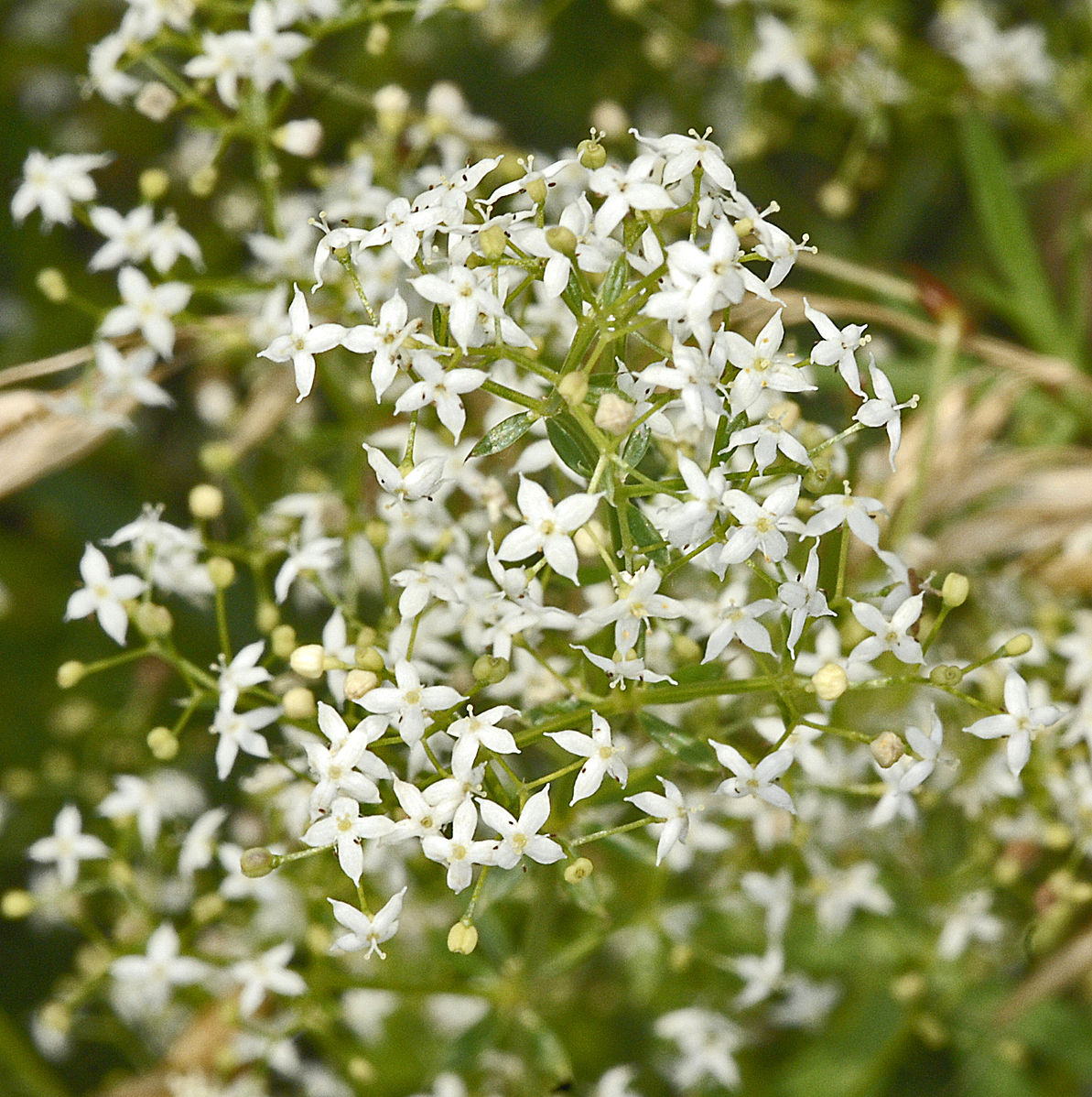You are probably familiar with Baby’s Breath or Gypsophila – always present in wreaths, bouquets, and flower arrangements. However, you may not have thought of it as a garden plant. We’ll cover everything you need to know about Baby’s Breath Plant Care.
Baby’s breath is a low-maintenance addition to the perennial garden. Like lavender or catnip, Gypsophila flowers give the garden a charming, delicate look. This plant blooms from early summer to fall, making it an excellent screen to hide other perennials when they finish their flowering season. If you like cottage-style gardens, you can pair them with delphiniums, irises, marigolds, bulrushes, sedges, and other flowers.
Contents
Baby’s Breath Quick Facts
Name: Gypsophila sp.
Common Name: Baby’s Breath, Maiden’s Breath
Type: Plants & Flowers
Region of Origin: Europe, Asia, Northern Africa
How to Care for Baby’s Breath
Light
Baby’s Breath best grows in the full sun, which means at least six hours of sun daily. It can also thrive in semi-shade, especially during hot summer days. If they grow in full shade, plants will survive, but they will produce fewer flowers.
Water
Baby’s Breath is a plant of a dryer climate. Too much water can cause root rotting, especially if the soil is heavier and have poor drainage. You can water it if the period without rain lasts a couple of weeks.
Soil
Baby’s Breath is a plant that prefers well-drained, light, slightly acidic soil. It can tolerate poor soils; it even prefers them. However, if you want your plants to grow bigger and give you more flowers, you can fertilize them once a year.
Is Baby’s Breath Toxic?
Is Baby’s Breath toxic to humans?
Gipshophyla contains chemicals that can irritate skin and cause rash. It’s also slightly toxic when ingesting, and can cause stomach problems and vomiting.
Is Baby’s Breath toxic to cats?
It’s not toxic to cats, although it can cause some gastrointestinal problems, which can result in vomiting and diarrhea.
Is Baby’s Breath toxic to dogs?
Gypsophila is not toxic to dogs but like cats, it can cause stomach problems.
Is Baby’s Breath toxic to rabbits?
It’s not toxic to rabbits but can cause stomach irritation and vomiting.
Is Baby’s Breath toxic to guinea pigs?
Baby’s Breath is not toxic to guinea pigs, but you shouldn’t encourage them to eat it, because it can cause irritation and result in gastrointestinal problems.
How to Plant Baby’s Breath
Propagating Baby’s Breath
Baby’s Breath is easy to propagate by stem cuttings or root division. It takes around three weeks before new shoots appear, after stem cutting. New roots appear after two weeks when dividing the root ball into smaller parts. You can also propagate it from seeds, but plants won’t flower the same year.
Sowing
Sow seeds indoors in late winter or early spring after the last frost. Use a good quality seed starter mix. Water carefully but thoroughly until water drains from the bottom of the container. Cover with a piece of clear plastic wrap or use a plastic bag to maintain high humidity levels until sprouts appear (about three weeks). Remove the cover once plants have sprouted. Plants will take another 2-3 weeks before they are ready for transplanting into your garden or potting up.
How to Plant Baby’s Breath Roots
A hole should be big enough to accommodate the roots without crowding them. Add plenty of organic material, such as compost or leaf mold. It will help the plants establish themselves quickly and ensure they have plenty of nutrients.
Plant your Baby’s Breath in the hole and backfill with more soil, firming well around the roots to remove any air pockets. Water well and mulch with straw or bark to conserve moisture and keep down weeds.
How to Grow Baby’s Breaths from Cuttings
Select 3 to 5-inch pieces of stem and apply the rooting hormone. Place the cutting into the soil with about 2 inches of stem above the soil line. Water plants and put containers in plastic bags, tie them up, and left in a warm place, away from direct sunlight. In four weeks, plants should develop roots. You can plant them in separate pots or the garden.
What flowers go well with Baby’s Breath
Baby’s Breath is mostly used as filler in flower arrangements. It can be combined with other flowers for a stunning display. Baby’s Breath works well with roses, gerbera daisies, chrysanthemums, carnations, and many others.
If you grow it in the garden, you can plant it near the lavender. They look nice together and grow in similar conditions.
How to Prune Baby’s Breath
Baby’s Breath needs pruning in the middle of summer. You can cut off dry twigs and flowering branches that have sprouted more than others. Pruning will encourage new blooms from mid-summer to fall.
If you are growing your plants in pots and they are getting too big for their containers, pinch them back to produce bushier plants that will fill out their pots better.
Common Problems
Baby’s Breaths generally have few problems other than aphids or leafhoppers if you see these insects on your plants, you can use insecticidal soap to control them. Slugs may also be attracted to young plants, so check for these pests early in the morning before they have had a chance to do too much damage.
Keep an eye out for powdery mildew on your plants if they grow in a humid environment. This fungal disease is difficult to control once it appears but can be prevented with good air circulation.
If you have an old plant, it may have a fungal infection. The symptoms are yellowing leaves, usually starting at the base of the plant and working up. You can prevent this by cutting off the infected part of the plant and disposing of it and the surrounding soil.
Frequently Asked Questions
Is there another plant that looks like Baby’s Breath?
Gallium molugo (Fake Baby’s Breath) is a plant that can be mistaken for baby’s breath. It is invasive and will grow in a wide variety of conditions. If you find this plant growing in your garden, it is best to remove it as soon as you can to prevent it from spreading.

However, there are a few ways you can identify this plant from Gypsophila.
The leaves of gallium molugo are heart-shaped, and the edges are toothed. The flowers are star-shaped and white. Gallium molugo also has a strong onion scent while growing.
Gypsophila has round leaves with smooth edges and white or pink flowers that grow on long stems. They have a sweet fragrance when dried.
Where can I find baby’s breath plant for sale?
It is best to purchase from a local nursery or garden center so that you can inspect the plant before buying it. The plant should have crisp leaves and no signs of mold or rot.
If you cannot find a baby’s breath at a nearby nursery, there are many online sources available. Look for companies with positive reviews from other customers who have purchased from them previously before placing an order with them.
Is Baby’s Breath a perennial?
There are more than 100 species of Gypsophila. Some are annual, while the others are perennial and come up every spring.
How long does Baby’s Breath last out of water?
You can cut flowers up to a day before the event you are using them for, and you can store them in an air-tight container. They should last at least two days when properly stored.
Conclusion
Baby’s breath is a delicate flower commonly used in weddings, corsages, and floral arrangements. It is often combined with roses and other flowers to create beautiful bouquets. It is also a low - maintenance plant you can successfully grow in your garden. If you are looking for plants for sale, there are many online sources available that you can use as well as local nurseries.

 >
>